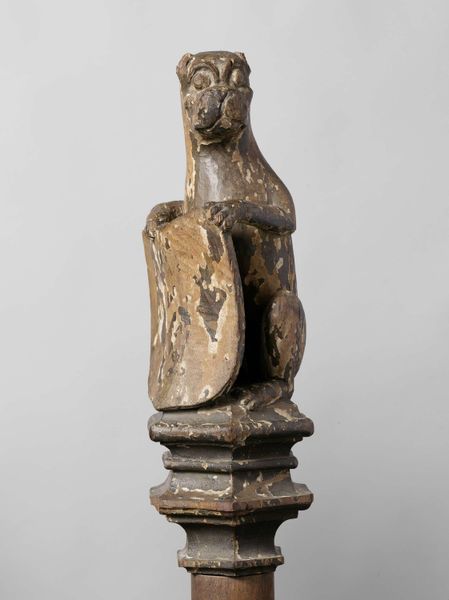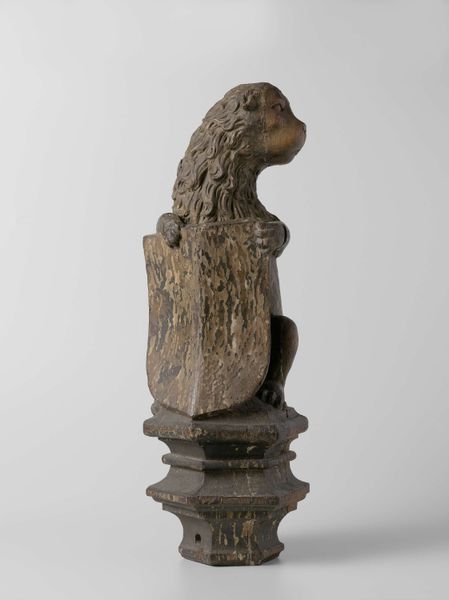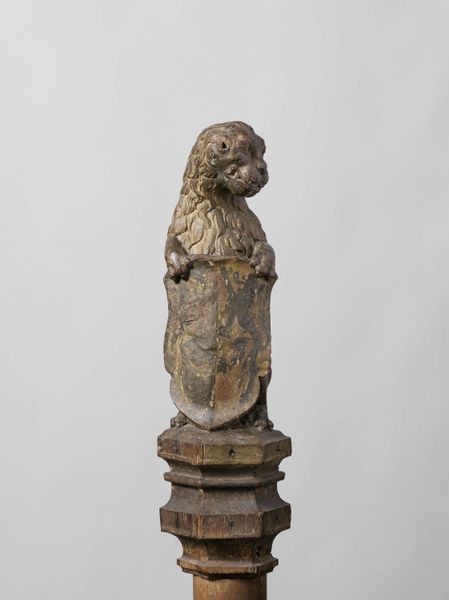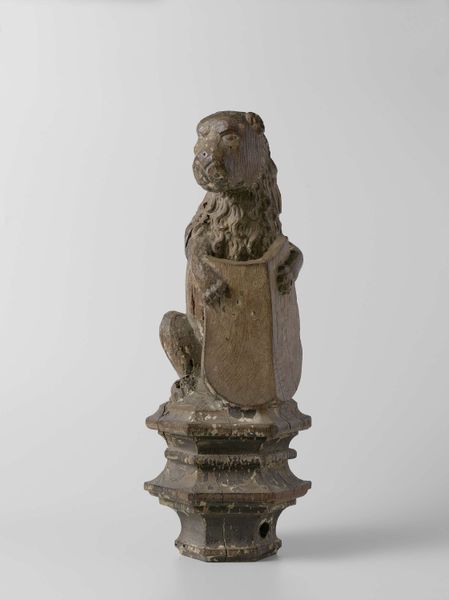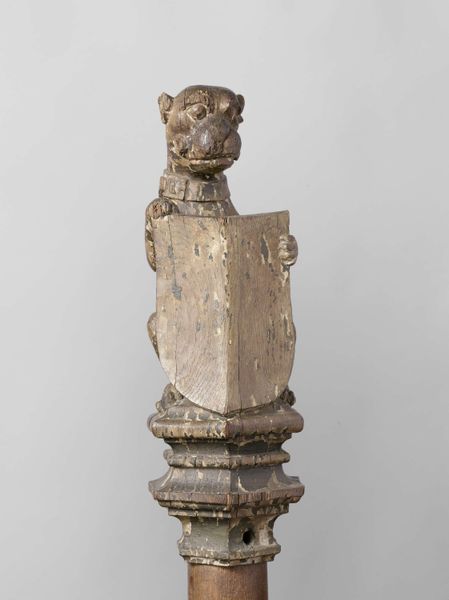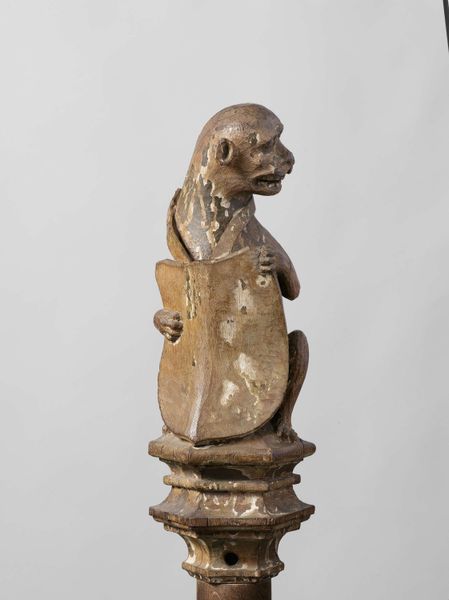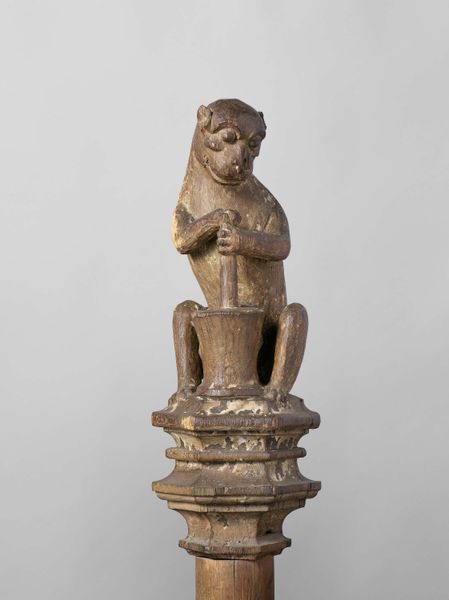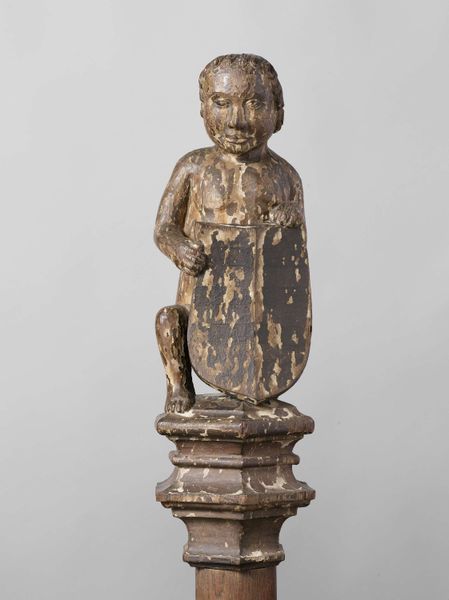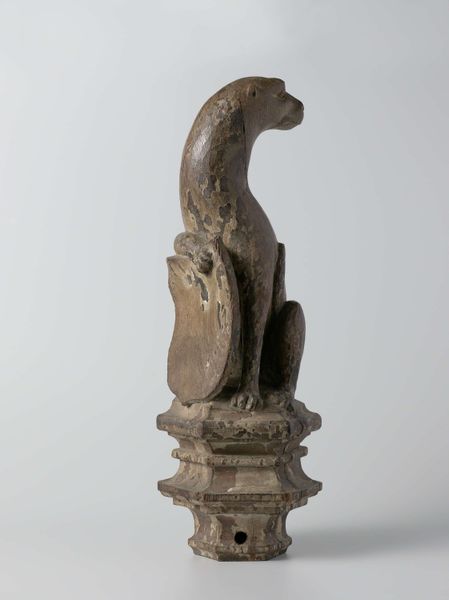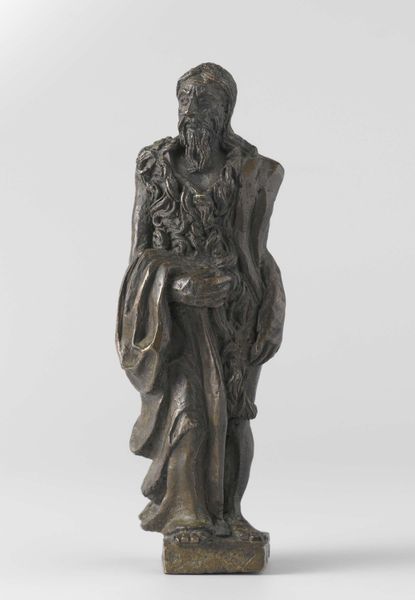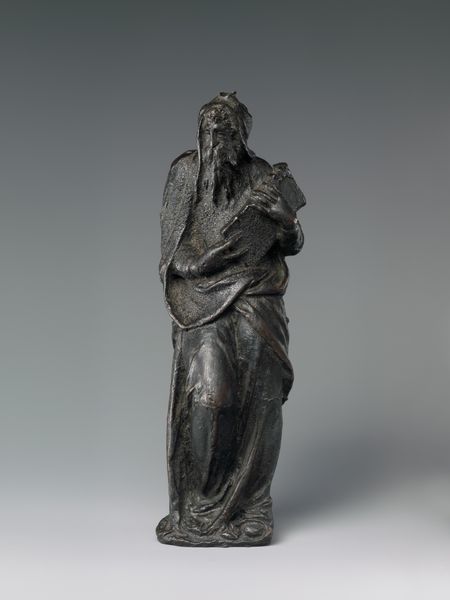
Lion Supporting an Escutcheon, From the Top of a Balustrade or the Backrest of the Stadholder’s Chair in the Rolzaal in the Hof van Holland, The Hague 1511
0:00
0:00
Dimensions: height 48.0 cm, diameter 23.0 cm
Copyright: Rijks Museum: Open Domain
Curator: This arresting sculpture dates back to 1511. It's entitled "Lion Supporting an Escutcheon, From the Top of a Balustrade or the Backrest of the Stadholder’s Chair in the Rolzaal in the Hof van Holland, The Hague" and is attributed to Joost Janszoon. Editor: It has such presence, doesn't it? A sort of stern watchfulness, conveyed through that imposing, almost weathered form. I am really drawn to its materiality—the dense wood grain, the carved detailing on the lion’s mane and the geometric shield. It feels deeply rooted in its making. Curator: Lions, of course, traditionally symbolize courage, nobility, and royalty. Here, the lion's embrace of the escutcheon powerfully merges heraldic symbolism with ideas of guardianship and sovereignty. You have the strength of the lion supporting the family, in essence. Editor: Absolutely. And thinking about Janszoon's craftsmanship, consider the specific tools and the labor involved. Hewing and shaping something this durable—wood transformed into a signifier of power, a symbol both functional and allegorical, used, reused and slowly decaying as it ages in that precise political ecosystem of the Stadtholder’s court… the human intervention is tangible. Curator: The gothic and medieval influences really shine through in its symbolic layering. Beyond its political function, the choice of the lion evokes ancient associations of authority and territorial dominance. Consider the ways heraldry functioned as a language, immediately understood by those within its cultural context, solidifying lineages of power through such iconic displays. Editor: How does the choice of wood affect its interpretation, rather than stone? Curator: Wood lends a more intimate, approachable feel than marble, which allows closer associations to be made with the domestic sphere, blending grandeur with a familiar touch. In this instance it also appears to have some original colour decoration still, which lends an unexpected warmth. It adds another layer to the interpretation of its purpose and presence, that might otherwise be missed. Editor: So, it’s a symbol embedded within a network of labor, materials, and social function. The value shifts over time depending on these negotiations of material constraints and the socio-political forces involved in its design and construction. Curator: Precisely, and it makes one reflect on the interplay of representation and the construction of authority that operated within that medieval court. Editor: I'll never look at heraldry the same way again! Thanks.
Comments
No comments
Be the first to comment and join the conversation on the ultimate creative platform.

